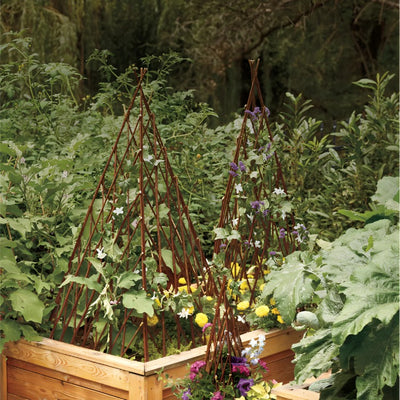Hardy, North American perennial
Description: Clusters of small, bright orange to red flowers in early summer; deep green foliage
Habit: Grows up to 2.5' high and 1.5' wide
Culture: Prefers full sun to part shade and well-drained garden soil; plant the top of the tuber one inch below the soil surface; tolerates dry conditions
Hardiness: Cold hardy to USDA Zone 3
Origin: North America
Attributes: Drought tolerant, Deer resistant, Attracts butterflies
Jefferson Documented
This striking native is commonly seen blooming in meadows and along roadsides throughout the eastern United States. Thomas Jefferson included "Pleurisy Root" in a list of native medicinal plants in his book, Notes on the State of Virginia (1780's). The common name Pleurisy Root refers to the historic use of this plant in treating lung ailments. Asclepias tuberosa was recommended by Robert Buist in his influential work, The American Flower Garden Dictionary (1839); he called it "one of our finest wild flowers, and suitable for dry places". The flowers of this Asclepias are an important nectar source for many butterflies, and the Monarch butterfly caterpillar feeds on its leaves. This plant is not attractive to deer.
Butterfly Weed (Asclepias tuberosa) arrives in a 2.5" pot.
Details
| Genus | Asclepias |
|---|---|
| Species | tuberosa |


















